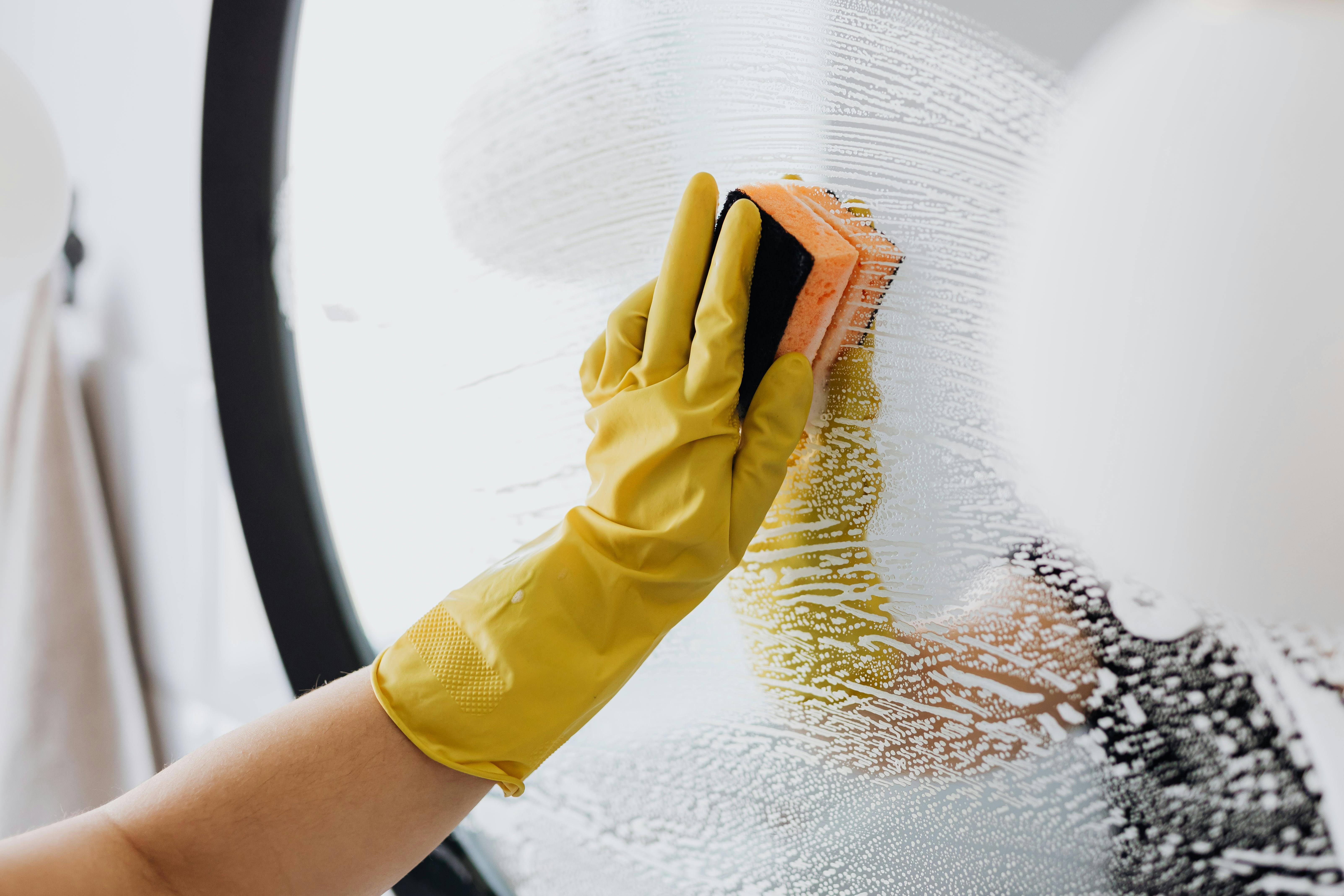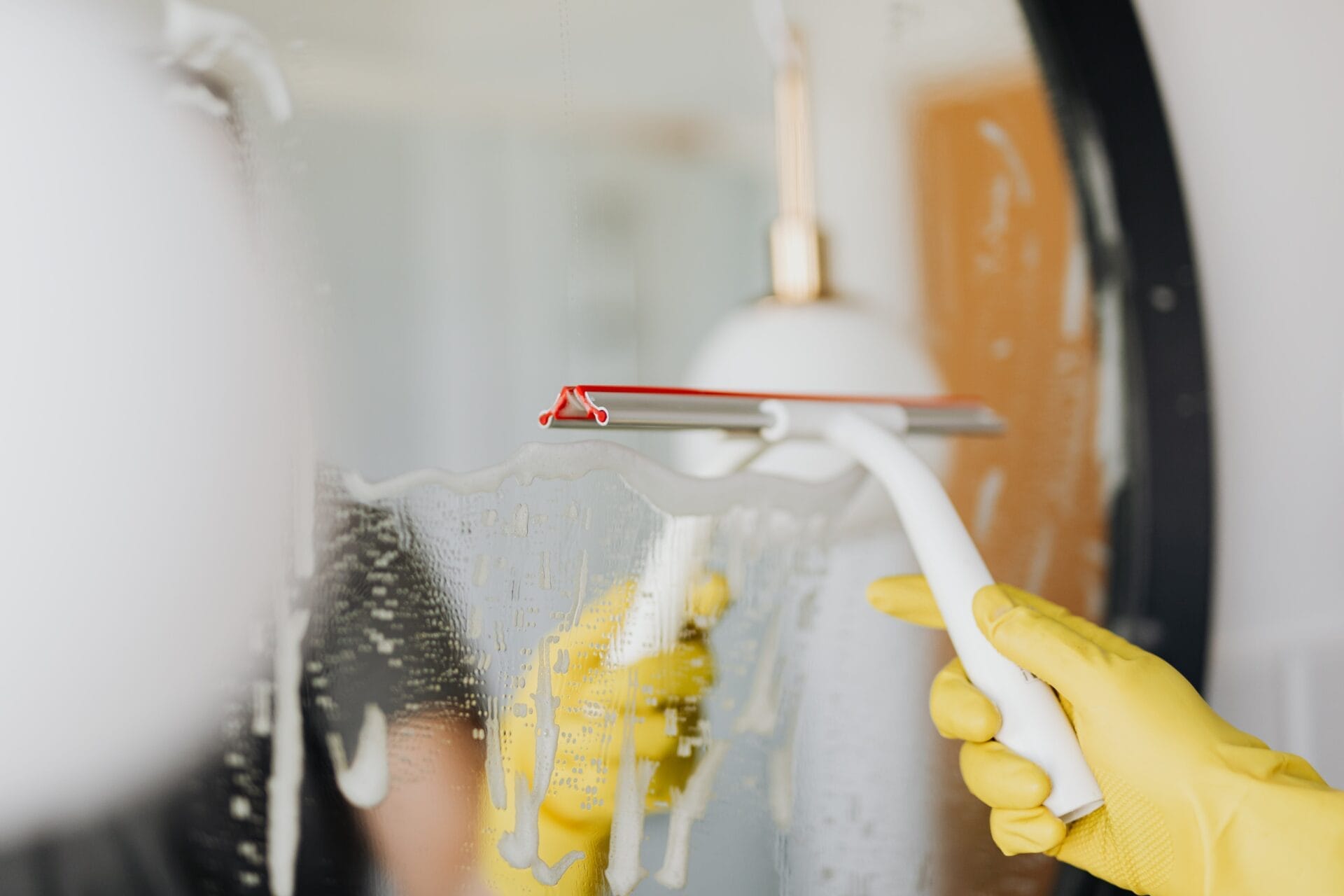Calcium buildup in water heaters can cause a number of problems, including decreased efficiency and decreased water flow. Fortunately, it is fairly easy to remove calcium buildup from your water heater. In this guide, we’ll explain how to remove calcium buildup from your water heater quickly and easily.To remove calcium buildup from your water heater, start by draining the tank. First, turn off the power to the water heater and then attach a hose to the drain valve located at the bottom of your water heater. Once attached, open up a hot water tap and place the other end of the hose in a safe area to allow it to drain. Once it has finished draining, close the hot water tap and then open up a cold water tap near your tank to allow any remaining sediment to be flushed out. After that, shut off both taps and detach the hose from the drain valve. Finally, flush out your tank with a solution of white vinegar and water (1/2 cup of vinegar for every 1 gallon of water) for about an hour. Once complete, turn on your power source and fill up your tank with clean, fresh water before running it through all of your faucets.
What Causes Calcium Buildup In Water Heaters
Calcium buildup in water heaters is a common problem that can occur in both traditional and tankless water heaters. This type of buildup is often referred to as “scale” and is caused by hard water, which contains high levels of minerals such as calcium and magnesium. These minerals can accumulate on the inside of the tank, reducing efficiency and leading to costly repairs. To prevent calcium buildup, it’s important to understand what causes it and how to eliminate it from your water heater.
One of the main causes of calcium buildup in water heaters is hard water. Hard water contains high levels of minerals such as calcium and magnesium, which can accumulate on the inside of the tank over time. This accumulation can reduce efficiency and lead to costly repairs. In order to prevent this from happening, it’s important to treat your incoming water supply with a softener or filter designed specifically for hard water removal.
Another cause of calcium buildup in water heaters is temperature fluctuations. When the temperature changes rapidly, the dissolved minerals in the water are more likely to become suspended in the form of scale or sludge, which then accumulates on the interior surfaces of your tank. To minimize this problem, you should always keep your hot-water temperature setting consistent and avoid rapid fluctuations in temperature. Additionally, you should also flush out your tank at least once per year to help remove any accumulated scale or sediment.
Lastly, improper maintenance can also lead to calcium buildup in your hot-water system. If you don’t regularly flush out your tank or inspect it for signs of mineral deposits, then these deposits will continue to accumulate over time until they eventually clog up essential components such as pipes and valves, leading to reduced efficiency and higher energy bills.
In summary, calcium buildup in water heaters is caused by hard incoming water supply containing high levels of minerals such as calcium and magnesium; rapid changes in temperature; and improper maintenance such as not flushing out the tank regularly or not inspecting for mineral deposits. To prevent this problem from happening, make sure you treat your incoming supply with a softener or filter designed for hard-water removal; keep consistent hot-water temperatures; flush out your tank once per year; and inspect it regularly for any signs of mineral deposits.
Benefits Of Removing Calcium Buildup From Water Heater
Calcium buildup on the inside of a water heater can cause a decrease in the efficiency of the appliance, leading to higher energy bills. Removing calcium buildup is essential to keeping your water heater working at its best. The benefits of removing calcium buildup from your water heater include improved energy efficiency, prolonged appliance lifespan, and improved safety.
Removing calcium buildup from your water heater will improve its energy efficiency. As calcium accumulates on the walls of the tank, it acts as an insulator, trapping heat and slowing down the heating process. This makes it difficult for the heater to reach its desired temperature and uses more energy in the process. By removing this layer of insulation, you can significantly reduce your energy bills.
Removing calcium buildup also helps prolong the lifespan of your water heater. As more minerals build up on the walls of the tank, they can eventually corrode and weaken them, leading to potential leaks or even structural failure. Removing this mineral buildup regularly will help prevent corrosion and ensure that your water heater runs efficiently for years to come.
Finally, removing calcium buildup from your water heater can help improve safety in your home. Mineral deposits can create hot spots in the tank which can cause overheating or even cause a fire if left unchecked. Regularly checking for mineral deposits also helps identify any potential problems with your water heater before they become serious safety issues.
Step 1: Drain the Water Heater
The first step in removing calcium buildup from a water heater is to drain it. This can be done by turning off the power to the unit and shutting off the water supply. Then, attach a garden hose to the drain valve at the bottom of the tank and place the other end into a floor drain or outside. Open up the pressure relief valve at the top of the tank and turn on a hot water faucet in your home. This will cause water to flow out of the tank and through your garden hose until it is completely drained.
Step 2: Flush Out The Tank
Once you have drained all of the water out, you can begin flushing out any remaining sediment that may be in your tank. To do this, turn on your cold water supply and fill up your tank with fresh water. Let this sit for about 10 minutes so that it can dissolve any calcium deposits that may have built up inside. After 10 minutes, open up your hot water faucet again and let any remaining sediment flush out.
Step 3: Clean The Inside Of The Tank
Once all of the sediment has been flushed out, you can begin cleaning inside of your tank. Start by filling it back up with fresh cold water and adding some white vinegar or lemon juice. Let this sit for about an hour before draining it out again so that it can dissolve any remaining calcium deposits inside. After draining, rinse out your tank several times with clean cold water until all traces of vinegar or lemon juice are gone.
Step 4: Refill The Tank And Turn On The Power
Once you have finished cleaning, refill your tank with fresh cold water and turn on the power to your unit again. Make sure that all connections are secure and then turn on a hot water faucet in your home so that air is forced through all lines connected to your unit. This will help prevent any further buildup from occurring in these lines.
Remove Calcium Buildup From Water Heater
Calcium buildup can be a major issue for any water heater. Hard water contains more calcium and magnesium than soft water, and as it passes through the water heater, the minerals can form a coating on the inside of the tank. This layer of calcium can reduce the efficiency of the water heater, leading to higher energy bills and a shorter lifespan for your appliance. Fortunately, removing calcium buildup from your water heater isn’t too difficult. Here are some tips for getting rid of calcium deposits in your tank.
The first step in removing calcium buildup from your water heater is to shut off the power or gas supply to the appliance. Then, turn off both hot and cold water supplies to the unit before draining it completely. You should also open both hot and cold valves on top of your tank to allow air into it while you drain it. Once you’ve emptied the tank, use a brush or scrubber to remove any visible deposits from the inside walls of the tank.
After scrubbing away any visible deposits, you can use a chemical cleaner specifically designed for removing calcium build up in tanks. These products are typically made with citric acid or phosphoric acid, which will help dissolve away any remaining sediment from within your tank. Make sure you follow all manufacturer instructions carefully when using these products and wear gloves and safety goggles while doing so.
Once you’ve cleaned out your tank with chemical cleaners, it’s important to flush out any remaining residue before refilling it with fresh water again. Attach a hose to one of the faucets at the bottom of your tank and use this hose to flush out any remaining sediment or chemicals that may have been left behind by cleaning products or mineral deposits. You can also add a bit of vinegar or lemon juice into the mix as an additional cleaning agent if desired.
Finally, refill your water heater with clean, fresh water after flushing out all residue from within it. This is important because any leftover residue could damage your appliance over time if not removed properly before refilling it with new hot water again. Once filled up again, restore power or gas supply back on to heat up your newly-cleaned tank and enjoy fresh hot water for years to come!

Maintaining Your Water Heater To Prevent Calcium Buildup
One of the most common issues with water heaters is calcium buildup. Calcium buildup can cause a number of problems, including reduced efficiency, increased energy costs, and premature failure. Fortunately, there are a few simple steps you can take to maintain your water heater and prevent calcium buildup.
The first step in maintaining your water heater is to flush it regularly. This process involves draining the tank and removing any sediment that has built up over time. It’s important to flush your water heater at least once a year, or more often if you have hard water in your area. Taking this step will help remove any calcium deposits that have already accumulated in the tank, as well as preventing further build-up.
Another important step in preventing calcium buildup is to use a water softener system. A water softener system will help reduce the amount of calcium and other minerals present in your home’s water supply. This will help keep the mineral levels low, which will reduce the amount of sediment that can build up in your tank over time.
Finally, it’s important to check the temperature setting on your hot water heater regularly. If it’s set too high, this can cause excess calcium to form on the heating element, which can lead to premature failure of the unit. Keeping the temperature at a moderate level (around 120 degrees Fahrenheit) is recommended for best results.
By following these simple steps and taking regular maintenance measures for your hot water heater, you can help prevent calcium buildup and extend the life of your unit. Doing so can also save you money on energy costs in the long run!
Testing For The Presence Of Calcium In Your Water Heater
Testing for the presence of calcium in your water heater is an important step in maintaining the health and longevity of your appliance. Calcium deposits can form on the interior surfaces of a water heater, causing it to become clogged, corroded, and potentially unsafe. If left unchecked, these deposits can also reduce the efficiency of your water heater and lead to costly repairs. Fortunately, there are several simple methods that you can use to test for calcium buildup in your water heater.
The first way to test for calcium is by using a calcium hardness testing kit. These kits are readily available at most home improvement stores and come with detailed instructions on how to use them. Most kits will require you to fill a sample container with some water from your water heater and then add a few drops of the kit’s reagent solution. After a few minutes, you should be able to compare the color of the sample with those on the included color chart. If the sample is darker than one of the colors on the chart, it indicates that there is likely calcium present in your water heater.
Another way to test for calcium buildup in your water heater is by taking a visual inspection of its interior surfaces. If you notice any white or grayish deposits on any of its walls or pipes, then these are likely caused by calcium buildup and will need to be removed as soon as possible. In order to remove these deposits, you will likely need to hire a professional plumber or utilize an acid-based cleaning solution specifically designed for this purpose.
Finally, if you have any doubts about whether or not there is calcium present in your water heater, then it may be best to call a local plumber who can perform an inspection and make an accurate diagnosis. The plumber should be able to identify any areas where calcium has built up and advise you on how best to proceed with removing it so that your appliance remains safe and efficient moving forward.
Is It Necessary To Clean The Inside Of A Water Heater?
The inside of a water heater needs to be cleaned periodically for optimal functioning. Over time, minerals and sediment can build up in the tank, reducing its efficiency and increasing the risk of a burst or leak. Regular maintenance also helps to ensure that your water heater is working safely and efficiently.
Cleaning the inside of your water heater is an important part of regular maintenance and should be done on an annual basis or more often if necessary. It is important to check the manufacturer’s instructions for specific recommendations on when to clean the inside of your water heater. In general, it is best to begin with a visual inspection of the tank, looking for any signs of corrosion or sediment buildup.
If you notice any corrosion, sediment buildup, or other issues in your tank, it is best to contact a professional for help in cleaning and repairing your water heater. If these issues are not addressed promptly, they could lead to further damage or even a dangerous situation.
When performing regular maintenance on your water heater, it is important to follow all safety precautions recommended by the manufacturer. For instance, you should always turn off the power supply before attempting any work on your water heater. Additionally, you should never open the drain valve without first draining some of the hot water from the tank as this could result in scalding or even injury.
In general, cleaning the inside of your water heater can be done with a mixture of vinegar and baking soda poured into the drain valve at least once every year. This solution will help break down any mineral deposits that may have built up over time and make them easier to remove from the tank during regular maintenance visits.
Cleaning the inside of a water heater is an important part of regular maintenance that helps keep it running efficiently and safely over time. Always consult with a professional if you notice signs of corrosion or sediment buildup in order to prevent further damage or injury from occurring due to improper handling or use.

Conclusion
Removing calcium buildup from your water heater can help ensure that it runs more efficiently and lasts longer. However, it can be dangerous, so it’s important to take all necessary precautions before starting the process. If you don’t feel comfortable tackling the task on your own, you should contact a professional to do the job for you.
There are several different ways to go about removing calcium buildup from your water heater. You can use a vinegar and baking soda solution, a descaling solution, or even hire a professional plumber to do it for you. Regardless of which option you choose, taking care of calcium buildup is an important step in keeping your water heater running efficiently and lasting longer.
In conclusion, calcium buildup in your water heater can cause major issues if not taken care of properly. Taking the time to remove the build up will help ensure that your water heater runs more efficiently and lasts longer. While there are several options available for removing calcium buildup from your water heater, make sure to research each one carefully before deciding on which one is right for you.

